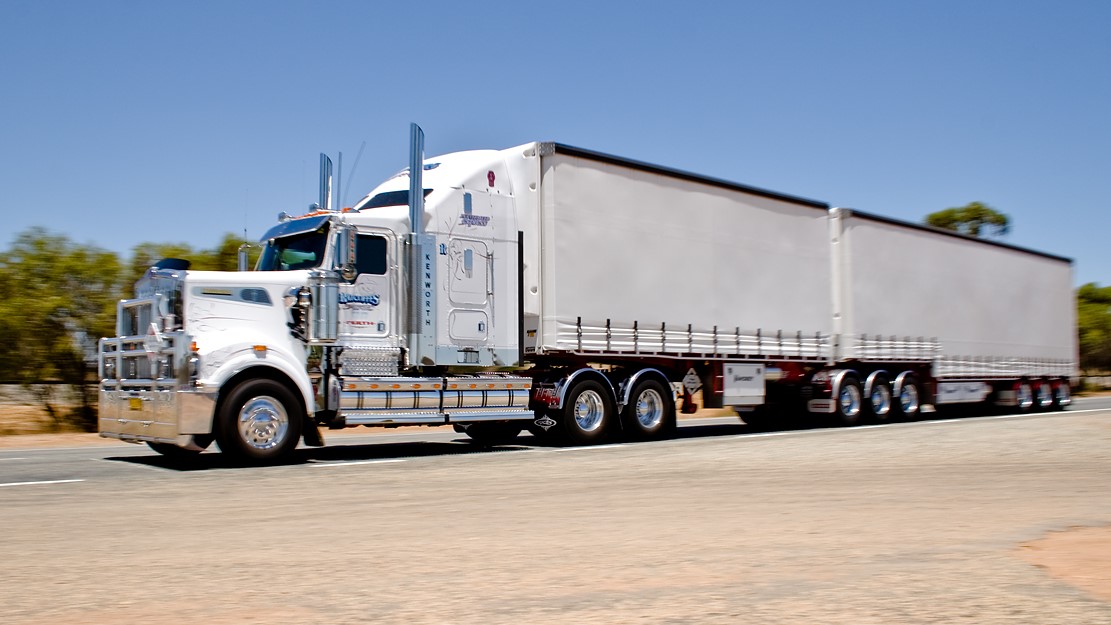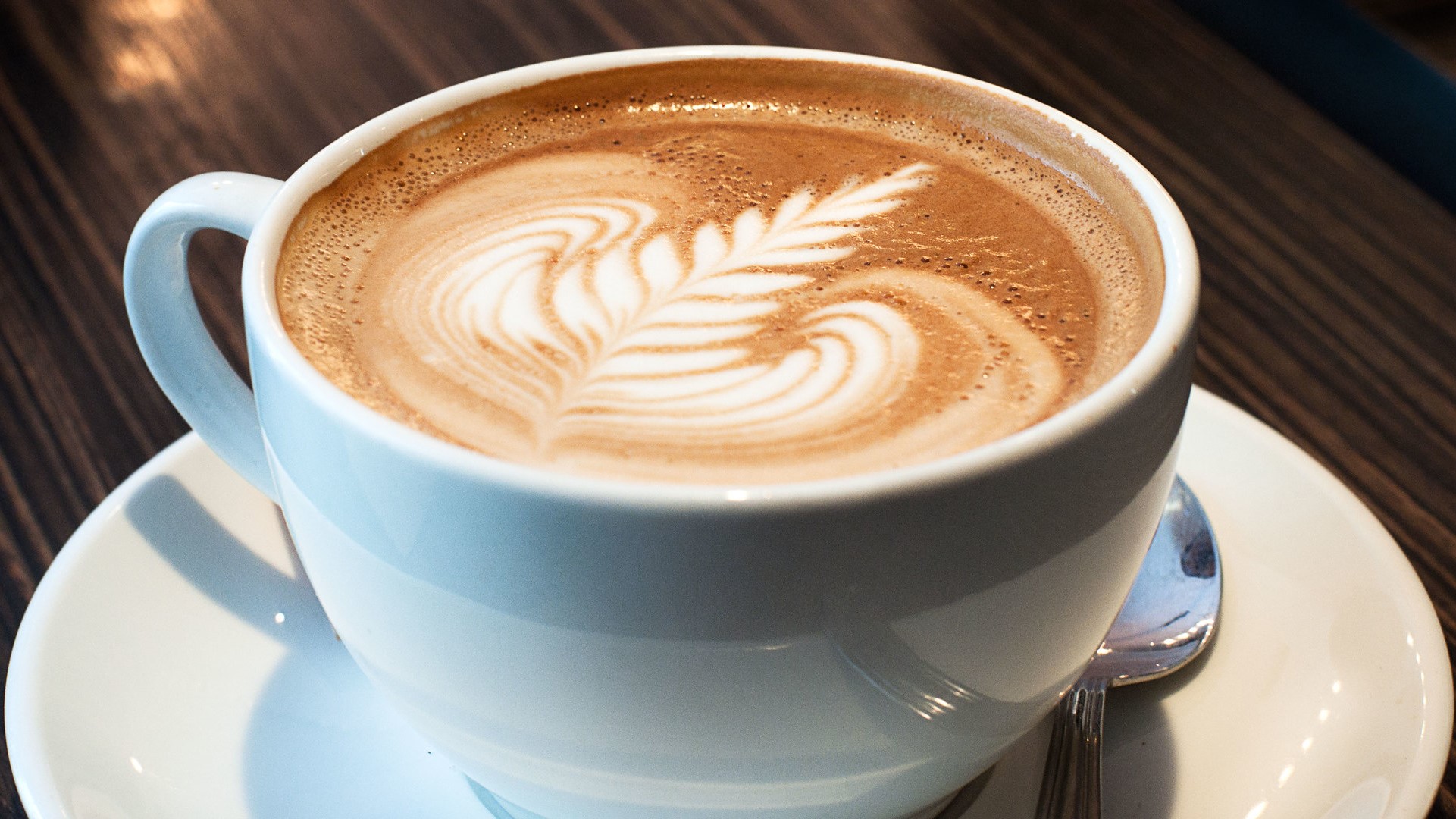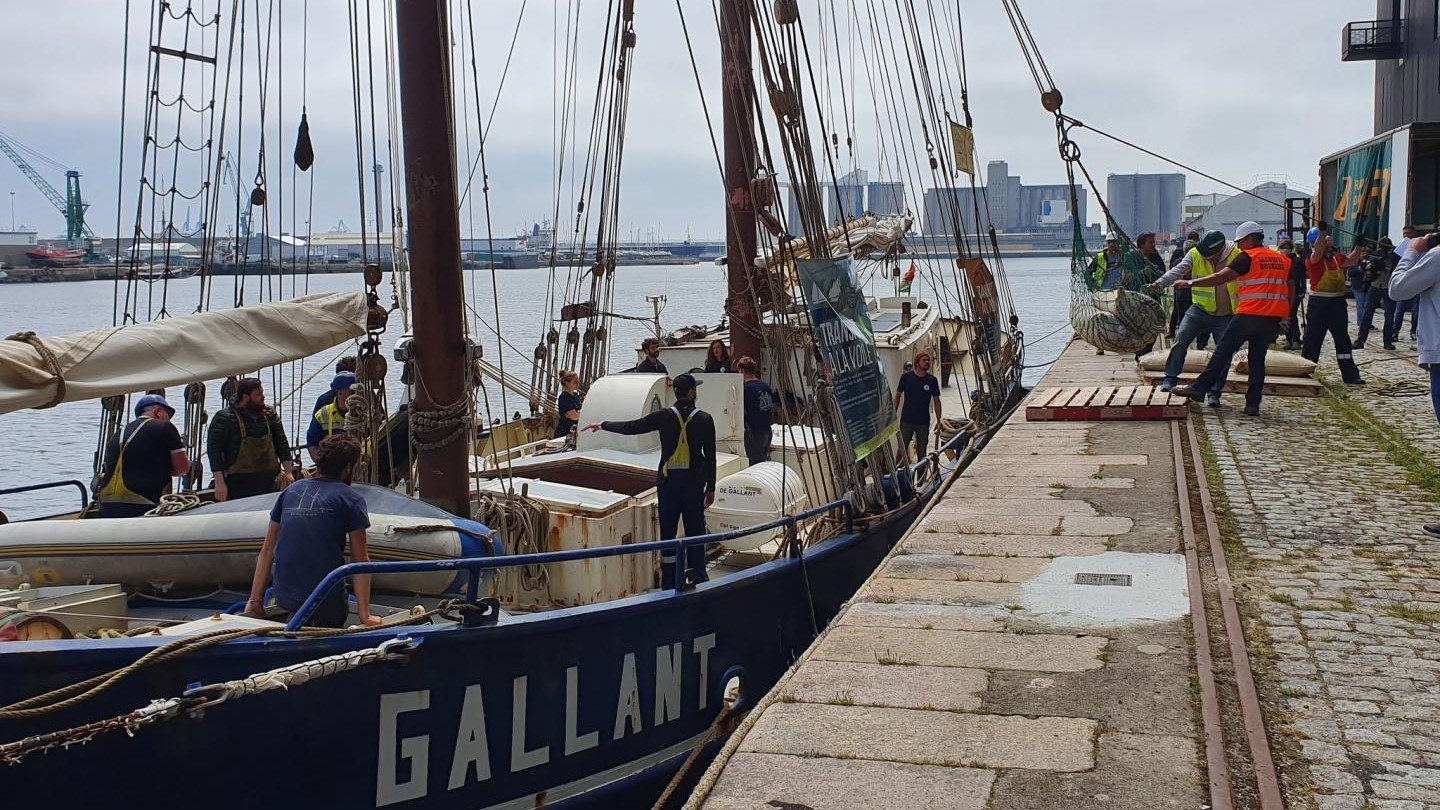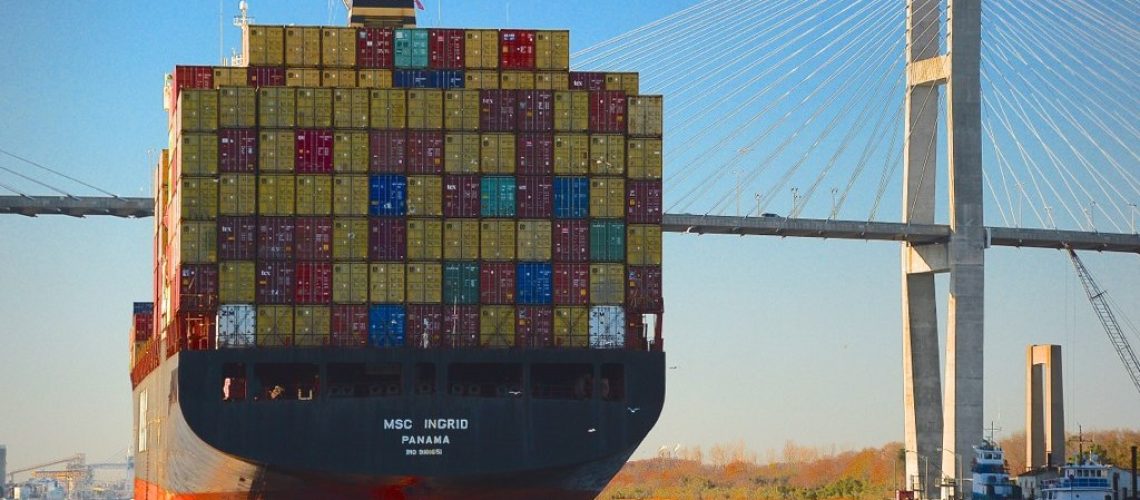With the climate crisis in the back of their minds, more and more consumers are trying to limit their footprint. This means they’re looking at where the products they buy come from. The rule of thumb is: the greater the distance it travels, the more polluting the transport. This is generally the case, but sometimes it is inconsistent with the complex, even paradoxical reality of our globalised economy.
Despite all the promises and efforts, the concentration of greenhouse gases (GHGs) in the atmosphere continues to rise as a result of human activities. This has a huge impact on climate change. The three main greenhouse gases – carbon dioxide (CO2), methane (CH4) and nitrous oxide (N2O) – reached record highs in 2020. And that’s despite the temporary decline in new emissions due to the corona pandemic and reduced economic activity.
“At the current rate of increase in greenhouse gas concentrations, we will see a temperature increase by the end of this century far in excess of the Paris Agreement targets of 1.5 to 2 degrees Celsius above pre-industrial levels. We are way off track. If we continue to use fossil fuels, we will reach a warming of around 4 degrees by the end of the century.” This is how Petteri Taalas, Secretary-General of the World Meteorological Organization (WMO), described the situation shortly before the COP26 in Glasgow last November. And if that wasn’t already enough, the warming we’re currently seeing will continue for several decades to come. Even if we are able to quickly reduce net emissions to zero. This is because CO2 can linger in the atmosphere for centuries.
Transport is to blame
One of the human activities that is regularly blamed is transport. Not just passenger transport, but also the transport of all goods and products that we consume on a daily basis. More and more people are shocked when they hear that apples are being flown over from New Zealand, beef is being brought in from Argentina, or Belgian wood is being imported from China .
The main complaint here is of course the huge distances that the products have to travel to reach the end customer. Especially when there are good alternatives closer to home. Freight transport is responsible for 30-40% of the CO2 emissions caused by the transport sector, which in turn accounts for about 15% of global emissions.
But for the European Union, that share is around 25%, even though the EU is aiming to reduce its emissions from passenger and freight transport by at least 55% by 2030. The EU also aims to become carbon neutral by 2050. In 2019, freight transport emitted almost 340 million tonnes of CO2.

If we look at the distribution of emissions over the different types of transport , we see that lorries account for 53.7%. Shipping is responsible for 36.6%, planes 6.5%, vans 2.6% and rail transport just 0.6%. “In Belgium on the whole, and Wallonia specifically, road transport accounts for as much as 80-85% of the total emissions,” says Arnaud Zacharie. He is Secretary-General of the National Centre for Development Cooperation (CNCD-11.11.11) and a lecturer at the ULB and ULg.
How big is a product’s ecological footprint?
On their own, these numbers don’t mean a lot. So how much of a product’s total carbon footprint is actually down to transport? This is where things get a little more complicated as we’re dealing with a topic where everything is relative. Arnaud Zacharie takes the example of beef from New Zealand compared to beef from Brazil. “If both products arrive and are consumed in places that are at equal distances from where they started, their transport will of course produce the same emissions. Regardless of where they came from,” he says. “But let’s say the New Zealand cattle graze on natural pastures and producing their feed doesn’t cause deforestation. Then their total ecological footprint is very different from that of the Brazilian cattle. They are fed with soy, which is responsible for massive deforestation in the Amazon.” And paradoxically, transport will therefore play a smaller role in the overall footprint of the Brazilian beef.
The reason for this paradox is that the origin of a product has much less of an impact on its ecological footprint than the way it is produced. Distance is of course still a factor, but it can be minimal. “New Zealand beef can even have a smaller footprint than its ‘local’ equivalent. For example, if the New Zealand beef is shipped to Belgium and then combined transport or electric cargo bike is used to take it to where it will be consumed. Compare this to a local equivalent, which might be fed with soy that has caused deforestation of the Amazon region, and is then transported by lorry,” emphasises Arnaud Zacharie. “It is therefore important to put into perspective the impact that transport as part of international trade has on the ecological footprint of a consumed product.”
A common criticism of fair trade
Fair trade is based on North-South trade and is therefore often criticised for its emissions caused by international transport. That’s why we try to make people aware of its relative impact. “A comparison is often made between the completely local approach and the import of products from abroad. It’s a cliche we’re trying to fight,” says Patrick Veillard. He is a Fair Trade Policy Advisor at Oxfam-Magasins du Monde. “Local production obviously has many advantages. But it is an illusion to believe that everything, especially our food, can be relocated.

This is why we want to offer more insight into the ecological costs of transport, because it is something we often get criticised for. We prefer to calculate the carbon footprint of a product by doing a life cycle analysis. For example, we look at the full life cycle from raw materials to the end of a product’s lifespan. This reveals that transport represents a small to very small part of the total emissions during the life cycle of a product. This is especially the case for international transport. For example, for food consumed in France, transport-related emissions are around 4%. Of those emissions, 80% are generated in the country of consumption, and only 20% are caused by international transport.”
Of course, this doesn’t mean we don’t need to put any effort in. For example, a few years ago, Oxfam-Magasins du Monde started a process of product analysis. We wanted to eliminate a whole range of items for which we could find an equivalent in Belgium and where a local fair trade approach could be applied.
Patrick Veillard also points out that due to many of its intrinsic characteristics, fair trade is more environmentally friendly, including in terms of transport. “Fair trade accelerates the ecological transition. It gives small producers, workers and cooperatives the financial means to invest in that change. By applying practices such as agroecology, a circular economy, etc. It is also a way to reduce the environmental impact of trade. But it is also a way of trading with a limited number of intermediaries and without fragmenting the value chains, unlike conventional trade.”
Loose coffee less ecological than coffee in packets
Pierre-Yves Orban is co-founder and Chief Technology Officer (CTO) of Javry, a Brussels-based company that sells sustainable and environmentally friendly coffee. Just before the coronavirus outbreak, his company started developing a complete CO2 analysis. Unfortunately, the exercise was put on hold due to the impact of the pandemic. Nevertheless, we can draw some early conclusions from the work they had already done. We can conclude that the international transport of green coffee causes just 5% of the total emissions. We do this by analysing the entire life cycle of a conventional coffee, from the farm to the cup to the rubbish bin. “It is interesting to note that the consumption, i.e. the preparation of a cup of coffee, accounts for the majority of the footprint,” says Pierre-Yves Orban. This share is even greater than what is caused by production. And it varies according to the appliance used: for example, a classic Italian coffee maker produces fewer emissions than an automatic espresso machine.

Added to this is the hidden transport associated with the different phases when the green coffee reaches its destination (roasting, packaging, distribution, etc.). “But everything depends on the assumptions we make,” Orban says. “Let’s say a consumer lives in France and the coffee has to travel 500 kilometres to reach their home. Then the impact will definitely be different than for someone who lives right next to the distribution point.”
Coffee’s journey to reach our cup
Pierre-Yves Orban: “The journey our coffee takes is quite simple. In general, the small producers harvest their coffee cherries and have them brought to the cooperative that they’re a member of. This is usually done by lorry, via a freight forwarder that drives around the farms. At the cooperative, the berries are processed into the green coffee that we buy. From there they are transported in bags of 50 to 60 kilos by lorry to the nearest port. There they are put into containers and loaded onto a cargo ship. The coffee arrives in Europe, in our case in Le Havre. It is stored there and then transported by lorry to the roaster we work with. This is in Bièvre. The coffee is again stored there before it is roasted, packed and transported by lorry or van to our facilities in Brussels. Finally, our customers’ orders are delivered by Bpost or Shippr. When it comes to the industry’s biggest companies, the coffee makes roughly the same journey. But it also passes through many more different hands before it arrives in the place it will be roasted and consumed. That’s why it’s difficult to accurately trace the coffee sold by the bigger companies.”
Orban continues to explain how complex it is to calculate the exact share of a product’s carbon footprint that transport is responsible for. He uses the example of the delivery of Javry coffee in bulk, in barrels of 5, 10 or 20 kilos. “At first glance, this seems to be a low-emission solution. But you have to remember that the barrels first need to be delivered. Afterwards, the empty barrels have to be collected, cleaned and returned, etc. The conclusion was that we would need to use our barrels many times before it would balance out from an ecological perspective. We also realised that specifically the distance that needed to be covered had a big impact. Ultimately, this solution only makes sense for customers close to our Brussels facilities. And not really for our customers that are further away. This is because of the return journey the empty barrels need to make. So if we’re purely looking at emissions, it’s less environmentally friendly to supply certain customers with coffee in bulk than in packets…”
What are the alternatives?
The coffee example clearly illustrates the complex calculations needed to reduce the carbon footprint of products effectively. It also highlights the importance of environmentally responsible logistics (we’ll come back to this later). Finally, we see the importance of alternative means of transport that create fewer emissions. Road transport is gradually going electric. We’re looking for a short-term, concrete solution to replace delivery vans and their combustion engines with electric alternatives. Or even with cargo bikes. They are being used more and more in the sector, especially in cities due to their limited range and speed. “We now supply some customers using electric cargo bikes instead of the traditional delivery vans,” says Orban. “10-20% of Javry’s deliveries are already made on two wheels. We are increasingly choosing this option whenever the order is big enough to make it financially viable. For small volumes, especially for our private customers, it is currently not financially feasible.” Replacing heavy lorries is less simple. Going electric here is also a strong possibility. But we are also looking at green hydrogen, be it via a fuel cell or a combustion engine.
Hydrogen also plays a role in the plan to make shipping and even air transport more sustainable in the (very) long term… However, there is still no unanimous support for this ‘clean’ gas. The stumbling blocks are its cost, storage and energy efficiency. Finally, there are other projects for cargo ships that run on gas or even green ammonia. And then there are the e-fuels. These are synthetic fuels produced from renewable electricity that could be used in many sectors.

More and more people are getting on board with the idea to use sailing ships to carry cargo, but currently still only on a small scale. Projects are being launched in the Netherlands and Brittany, for example, and some companies have already tried it out. This includes Javry, which imported coffee from Colombia for the first time in 2020 using only wind energy. “For the time being, this was a one-off because the sailing boats don’t have enough capacity to transport large amounts of coffee,” explains Orban. “But the Dutch company we partnered with plans to build a 125-tonne sailing freighter by 2025.
This type of vessel will also allow us to reduce the cost of transport. This will mean we can work with affordable prices for the consumer and compete with traditional transport.” There is also a need for crossings, because the travel time is about three times as long, Orban emphasises. He is nevertheless convinced that there is a future for sailing freighters as an alternative means of transport.
Are carbon neutral products a solution?
Over the past two years, more and more so-called ‘carbon neutral’ products have appeared. What’s the idea behind this? To offset the emissions generated in the production chain by supporting initiatives that in turn try to reduce emissions, for example by planting trees.
“This is something we also considered,” says Pierre-Yves Orban from Javry. “But right now we would rather put our efforts into reducing our emissions rather than offsetting them. That’s why we have the sailing project, bio-based packaging, cargo bike delivery, etc. But when we can’t reduce our footprint any further, it will be time to think about offsetting through meaningful projects that align with our values. Today, the term ‘carbon neutral’ is used, whether appropriately or not, for marketing. That’s why we don’t want to invest in it at all.”
“Carbon neutral is a fluid concept; it’s open to interpretation. It can have value, but it can also be a gateway to greenwashing,” confirms Arnaud Zacharie of CNCD 11.11.11. A valid definition of ‘carbon neutral’ is the emissions produced minus the emissions naturally absorbed by the soil and oceans. But if by ‘carbon neutral’ we mean that we can pollute guilt-free because we’re going to calculate the positive impact of our actions, then that’s greenwashing,” he says. “Not to mention the fact that the offsetting idea can’t be generalised or replicated across the entire global economy.”
“The solution has already been around for 20 years”
So far, we’ve talked about technical and technological progress, much of which remains hypothetical for now. According to Arnaud Zacharie, however, the most significant ‘innovation’ would be to already implement the ‘modal shift’. By this, we mean change our mode of transport. In concrete terms, this means: less road, air and sea transport, and more journeys by rail and inland waterways.
“That is THE structural solution,” he says. “The worrying thing, however, is that this solution has been around and people have been putting it forward for the last 20 years… But social dumping means that road transport has been increasing rather than decreasing. Since transport is part of the cost of products, companies of course want to reduce these costs. Not to mention that air transport, like shipping, has no carbon pricing. In its Green Deal, the European Commission proposes to effectively extend carbon pricing to air and road transport, but this hasn’t been finalised yet.”
Currently, the two modes of transport favoured by the modal shift are also the only two that don’t have competitive advantages over the others… “When the right thing to do is less profitable than practices that are clearly harmful, we’ve got a problem. And it is up to the government to introduce standards to change this. Otherwise, the transition will simply never happen, with the result that climate change will hit everyone very hard.”
Another ‘innovation’ that can have a major impact on freight-related GHG emissions relates to logistics, companies and connecting roads. “We know that it is the last kilometres that cost the most from an environmental point of view. Those kilometres are usually covered by lorry or van and are not very efficient. Therefore, putting companies near railways or a port, for example, can greatly reduce the need for road transport. The development of combined transport systems between cities will also facilitate more environmentally friendly freight transport. But of course there is still one problem: the cost. And that is often what companies look at first.”
The steep rise in e-commerce
The logistical aspect is very important in light of the current e-commerce boom. This has led to more and more home deliveries being made. They only add to those last polluting kilometres. Arnaud Zacharie insists that we shouldn’t transport any more goods than we already do today. “We can reduce the ecological footprint of certain modes of transport. But if that gain is undone by more and more journeys or flights, the total emissions will not decrease. In other words, we do our best to reduce the ecological footprint of road transport by using less polluting electric or hydrogen vehicles. But if at the same time air transport explodes by 25%, we’ve achieved nothing. We have to look at the situation as a whole. If we don’t, we’ll improve things in one area then undo all the good work in another. Then we’re just going in circles.”
Zacharie shares another, indirect benefit of moving away from fossil fuels: mechanically reducing the amount of goods we transport. Just as much oil, gas and petrol would no longer have to be delivered around the world.
“On average, e-commerce generates fewer CO2 emissions per product… Assuming the product isn’t returned. But that is precisely the problem: up to 50% of items are returned,” says Patrick Veillard. “It has become a kind of convenience or habit for consumers to order a product, try it out and then send it back. Here we see how important product quality and customer satisfaction are. With this in mind, Veillard remains positive that once fair trade organisations fully embrace e-commerce, there will be fewer returns.
“There are internal discussions going on about e-commerce, whether or not we should go for it. In my opinion, we can’t avoid it if we want to survive. We need to maintain a financial balance if we want to continue working towards our social goal: helping our partners by placing orders. But when we do launch e-commerce, we must respect our values and stick to the principles of fair trade as closely as possible.”
Arnaud Zacharie concludes: “In an ideal world we should be able to do e-commerce with products that are guaranteed to be sustainable. Products that can be delivered using few or non-polluting means of transport. And to collection points that are easily accessible on foot or by public transport. Only then will e-commerce really be behind the energy transition. But then the government has to support small producers against internet giants like Amazon or Alibaba. This is the only way we can ensure that consumers can make a conscious and fair choice.”


